Gerbils make fantastic pets! They are inquisitive, active, sociable and rarely bite. As they originate from the desert and dry grassland areas, gerbils do not produce much urine, which makes it relatively easy to keep their environment clean and free from smells.
Although they rarely bite, gerbils are quick and agile and not always easy to handle. Young children who want to handle their pet may be better with a different species. However, for older children or adults, gerbils are fun, entertaining pets.
There are actually about 90 species of the gerbil, but the one most commonly seen in pet shops is the Mongolian gerbil. Gerbils are about the same size as a small hamster, approximately 12cm long. A gerbil’s tail is as long as it’s body and is covered with fur. Gerbils have large feet and very muscular hind legs. They often stand on their haunches when not moving instead of crouching on all four feet. Gerbils can now be found in pet shops in a variety of different colours.
With appropriate care, gerbils can live happy and healthy lives for up to three and a half years. This guide will help you offer the best care for your gerbils.
Housing
Gerbils need a safe, secure home, where they can sleep, eat, play and exercise. Like all rodents, gerbils are chewers so the cage needs to be very secure! The cage should be kept away from draughts and direct sunlight. Gerbils are often active during the evening so you may not want to keep them in your bedroom as they may disturb you.
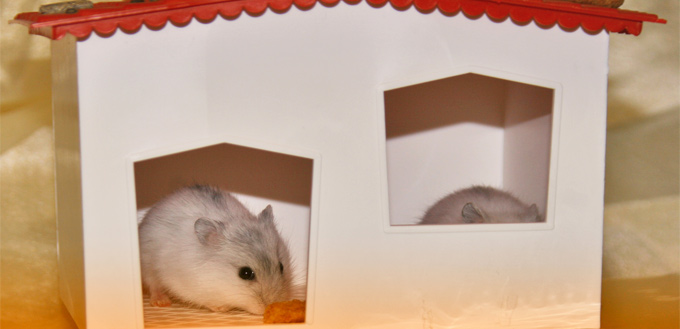
Gerbils naturally live in groups so it is important that your pets have a company of their own kind. It is best to buy two or more gerbils of the same sex, ideally from the same litter, before they are ten weeks old. If you try adding an older gerbil to an established group, your existing gerbils may be aggressive towards the newcomer. Females are often more aggressive than males. If you do have to introduce an older gerbil, set the cage up so that the gerbils can see and smell each other but are not able to injure each other. Once they have got used to being around each other, you can introduce them slowly but it is important that you monitor them closely in the first few days for any sign of aggression.
Gerbil cages are usually either wire, glass or a combination of both. To choose the best cage for your gerbil, it may help to think about how they live in the wild. In the wild, gerbils live in underground tunnels up to three metres long with several compartments and entry holes. It is important to try to mimic this natural habitat as much as possible. There are three main types of cage available for gerbils – wire, glass or a combination of both.
- Wire Cages
Wire cages are not the best for gerbils as bedding and waste will be kicked out through the bars. If you do decide on a wire cage, you must make sure that the bars are close enough together to ensure that no gerbils can squeeze through and escape.
- Glass Tanks
Glass tanks make great homes for gerbils. The tank will require a wire mesh cover to prevent escape (or unwanted entry by other pets!). Glass tanks are much tidier than wire cages because the gerbils are unable to kick bedding out of the tank.
Glass & Wire Cages
Perhaps the best cage for gerbils is a combination of glass tank with wire cage addition. These are often known as gerbilarium and are a great way to allow your pet to burrow and dig tunnels in deep bedding but also allow lots of ventilation and room for toys.
The fourth type of cage available which you may be familiar with is a tube cage. These are usually plastic cages of varying shapes and sizes with lots of tunnels and tubes to connect them together. These types of cages are good for mimicking the gerbil’s natural habitat and are great fun, but can sometimes be difficult to keep clean.
The minimum size recommended for a gerbil cage housing two gerbils is 30cm x 75cm with a height of at least 30cm. However, the bigger the better! The larger the habitat, the more places there will be to hide, play and explore and the happier your gerbils will be. The more gerbils you have, the larger the habitat needed.
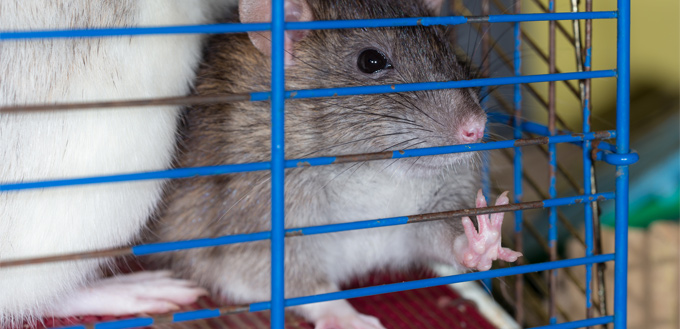
Other Accessories
Your gerbil’s cage will need to be filled with other accessories to keep them happy and healthy, including the following;
- Food Dish: A ceramic bowl is the best container for your gerbil’s food as it can’t be chewed and isn’t easily tipped over. The food can be scattered around the cage to prevent squabbling and encourage natural foraging behaviour, however, it is important that any uneaten food is removed regularly.
- Water Bottle: Being desert animals, gerbils don’t need a lot of water, however, they do need a steady source of water. A water bottle attached to the side of the cage works best. As gerbils don’t drink much water, it is important to refresh the water bottle often.
- Bedding: Gerbils need deep bedding to enable them to burrow and build their nests. A range of bedding is available for your gerbil, including bedding made from recycled paper and wood. Organic soil or peat can even be used as a natural bedding.
- Nesting Material: As well as bedding, it is also advised to add some separate nesting material to help your gerbils create a cozy place to sleep. This can be unscented toilet paper, hay or one of the many types of nesting material available at the pet shop. It is not advised to use fluffy cotton-wool type bedding as this can wrap around gerbils legs and injure them.
- Nest Box: Although gerbils will dig their own nests, you can add a nest box if you wish. Wood or plastic will get chewed, so may need replacing often. A clay flowerpot cut in half makes a great, tough nest box.
- Dust Bath: A shallow tray filled with clean, fine sand, often sold as Chinchilla Sand can be given to your gerbil to bathe in to keep their coat in good condition. It should be removed after use.
- Cardboard/Wood: Like all rodents, gerbils need to chew to prevent their teeth from overgrowing. You can use toilet or paper towel rolls or wooden chew toys available from the pet shop. You can also use a small branch from a tree such as apple, willow, hazel or beech but you must ensure that it has not been sprayed with pesticides. Ivy, yew and holly are all poisonous so should definitely be avoided.
- Toys: Gerbils are active and inquisitive and love to play! Tunnels, tubes, branches and ramps make exciting additions to your gerbil’s cage. You may like to get a variety of toys which can be changed periodically to keep the cage interesting for you and your pets.
- Exercise Wheel: Gerbils will use an exercise wheel but it is important to use an enclosed wheel and not one where your gerbil could trap its tail between the wires.
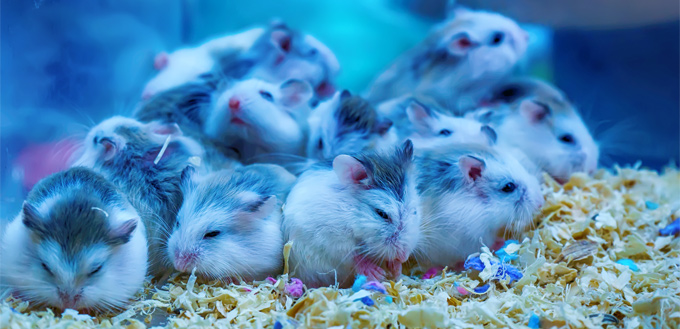
Feeding
To ensure that your gerbils stay healthy, it is important to provide them with a balanced nutritious diet. The best food for gerbils contains a wide variety of ingredients, including all the essential nutrients a gerbil needs.
A commercial food mix is excellent as a gerbil’s primary food, and should have all the nutritional requirements for a healthy pet. However, there are many other foods you can add to your gerbil’s diet or use as treats to keep them healthy and interested.
Additional Food/Treats
- Fruit such as apples, pears, melon, oranges, bananas
- Vegetables such as carrots, peas, celery, string beans, cucumber, pumpkin, broccoli, sprouts, and cauliflower.
- Nuts, grains, and seeds.
- Oats, millet, wheat cereal, and dry pasta.
- Live mealworms and crickets. These are a great source of protein which is sometimes lacking in commercial gerbil foods.
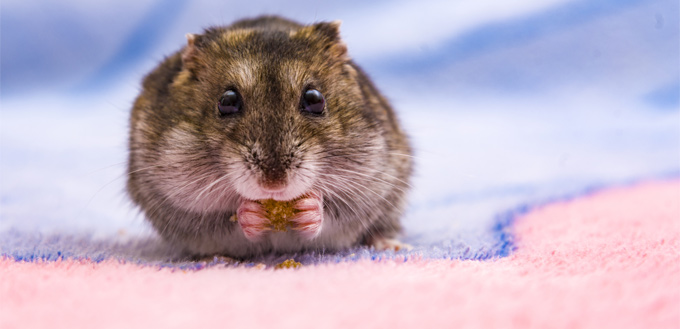
Foods to Avoid
- Potatoes
- Rhubarb
- Tomato leaves
- Spinach
- Citrus fruits
- Grapes
- Lettuce can be given occasionally but only in very small amounts as it can cause an upset stomach.
- Sunflower seeds and other fatty seeds should be given in moderation as they can cause obesity. Pumpkin seeds are a healthier treat.
Your gerbils will enjoy as varied a diet as you are able to provide. However, it is important that new foods are introduced gradually. All fruit and vegetables should be washed before feeding them to your gerbils. Fresh fruit and vegetables should only be given in small portions and any leftover food should be removed to prevent it from rotting. A good commercial mix with some additional treats should give your gerbils everything they need, but if you have a particularly fussy eater, a vitamin and mineral supplement can be added to the water bottle to ensure that your gerbils get a balanced diet.
Cleaning
Over cleaning your gerbil’s cage can be stressful for your gerbils and they are naturally clean animals. However, it is important that bedding material isn’t allowed to become damp or smelly, so this will need to be monitored and replaced as required. A small amount of used but unsoiled bedding and nesting material can be left in the cage as removing all odours may trigger fighting amongst your gerbils.
If any parts of the cage, including any toys, are dirty or smelly, they can be washed with soapy water but everything must be rinsed and dried before being put back in the cage.
Your gerbil’s food bowl and the water bottle should be cleaned regularly, at least weekly.
Like many other rodents, gerbils like to hoard food. It is important that you regularly check their nests and remove any stale food items to ensure that nothing becomes rotten.
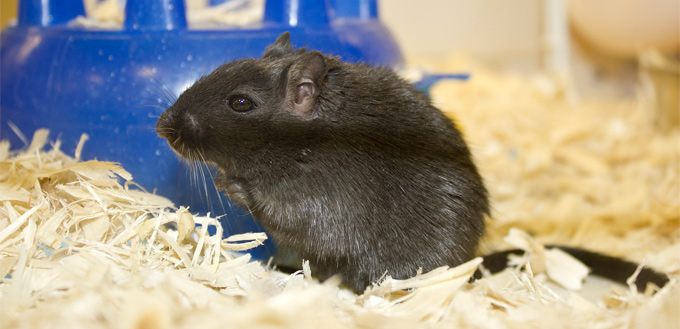
Handling
Although gerbils are noted as fond of being handled as guinea pigs or rats, they are usually friendly and happy to interact with their owners for short periods of time. Start by placing your hand in your gerbil’s cage so that they can sniff you and get used to your scent. Gradually, start to gently stroke them, and then try holding a piece of your gerbil’s favourite food to encourage them to come to you. If your gerbil seems happy and relaxed, you can try picking it up by placing your hand around its body, just behind the forelegs and supporting its hindquarters with your other leg. You should always do this while your gerbil is inside its cage in case it decides to jump. You should never handle a gerbil by the end of its tail as it can easily be injured.
Health
Gerbils are fun to watch and you will become familiar with how each individual looks and behaves. Any changes in the way a gerbil looks or behaves may indicate that something is wrong. It is important to monitor your gerbils closely and if you notice any signs of ill health, you should speak to your vet.
Signs of a Healthy Gerbil
- Bright eyes
- Glossy coat
- Alert and lively behaviour
Signs of an Unhealthy Gerbil
- Runny or sticky nose
- Runny or sticky eyes
- Dull coat
- Lethargy
- Increased or decreased eating or drinking
- Moist faeces (poo)
- Overgrown teeth
- Overgrown nails
- Repetitive behaviours
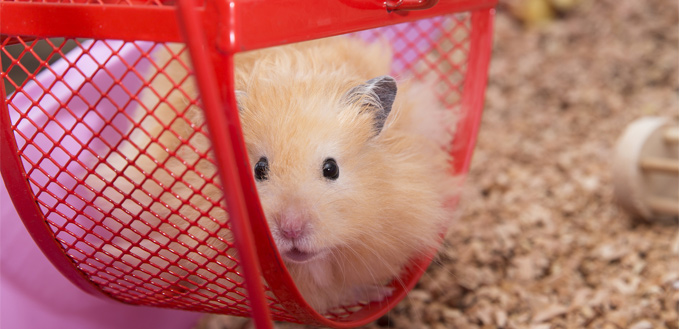
Summary
Gerbils are fascinating and entertaining pets for older children and adults. If you provide your gerbils with the best housing, food and care, they will reward you with endless fun and entertaining behaviour!
Sources:
- Gerbils – Gerbil Welfare – Tips, Advice, Health, RSPCA
- Pippa Elliott, MRCVS, How to Care for Gerbils, wikiHow
- What Do Gerbils Eat?, WebMD
- Laurie Hess, DVM, Owning a Pet Gerbil, VCA Hospitals






